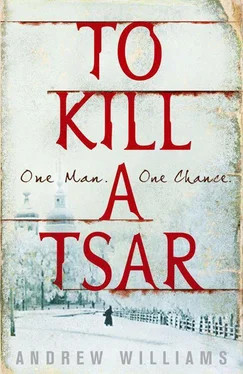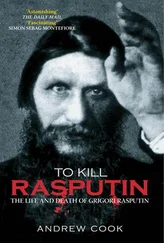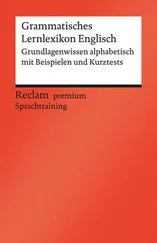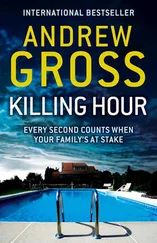A market trader removes the planks from his makeshift stall in the square. In front of a pink warehouse opposite the church, night watchmen are gathering about a brazier. Workers from the textile mill and the brewery on the embankment trickle home, black and shapeless in their heavy coats. The gaslights seem softer and very yellow as the snow quickens and falls in thumbnail flakes. She is a little late but she will come. Small, upright, striding across the square, and he will drop from the steps to kiss her, squeezing her so tightly and perhaps she will release her pain and cry with happiness and new hope.
HISTORICAL NOTE AND SOURCES
The plot and many of the characters in To Kill a Tsar are based on real people and events. The two years that pass in the book’s pages mark the rise and fall of the first important revolutionary terrorist group of modern times, the Narodnaya Volya or The People’s Will.
Terrorism is ‘the threat of violence and the use of fear to coerce, persuade, and gain public attention’ ( Report of the Task Force on Disorders and Terrorism , Washington, DC, 1976). It is a form of armed propaganda in an age dominated by the mass media. We live at a time when terrorists can change the lives of millions, take countries to war, and command the respect and support of many by committing suicidal acts of violence. The seeds of this kind of ruthless direct action were sown in the second half of the nineteenth century in Imperial Russia. ‘To attract the attention of the entire world, is that not in itself a victory?’ the Russian revolutionary Georgi Plekhanov observed after the assassination of Alexander II.
Alexander’s reign began in 1855 with a liberal reform that earned him the sobriquet of ‘Tsar Liberator’. The emancipation of the serfs in 1861 freed twenty-three million peasants from a system of slavery that bound them to the land and deprived them of rights enjoyed by his other subjects. But the tsar’s belief in his divine right to rule was unshakeable and attempts by nationalist and democratic movements to challenge it were ruthlessly suppressed across the empire. Minority languages such as Lithuanian, Ukrainian and Polish were restricted, newspapers, letters and literature were censored, trial by jury suspended and those who called for reform were imprisoned and exiled to Siberia. One of the characters in this story — Nikolai Kibalchich — spent almost three years in prison on a charge of lending a dangerous book to a peasant. A short time after his release he became a committed revolutionary and a member of The People’s Will.
Most peasants were faithful subjects of the emperor but among the educated, in particular the young, there was active support for representative democracy and radical reform. The tsar’s secret Third Section was formed with the support of the police and Corps of Gendarmes, to protect the autocracy from dissent. Its notorious headquarters was at Number 16 on the Fontanka Embankment.
After the explosion at the Winter Palace in 1880, Count Mikhail Loris-Melikov (1826–88) became minister of the interior. Within a few months of taking office he had organised the police into a new department and replaced the Third Section with a secret investigative body known as the Okhrana. One of the first directors of the new Police Department and the Okhrana was Count Vyacheslav von Plehve (1846–1904) who appears as a character in the pages of this book. In 1902 Von Plehve became minister of the interior but was assassinated by a revolutionary on the streets of St Petersburg two years later. Another figure in this book, Anton Frankzevich Dobrshinsky (1844–97), served as head of chancellery in the Ministry of Justice with special responsibility for the investigation of criminal affairs. Dobrshinsky was responsible for questioning members of The People’s Will and earned a reputation as a formidable interrogator.
There had been active terrorist groups in the south of the Russian Empire and in the capital itself for a number of years before 1879. In 1866 a student called Dmitry Karakozov attempted to kill the tsar, and it was to mark his miraculous delivery from the hands of this assassin that the foundation stone was laid for the Church of St Boris and St Gleb. In 1869 the Russian nihilist Sergei Nechaev wrote a manifesto that was to prove influential in the thinking of many young radicals. In The Catechism of a Revolutionary he declared,
The Revolutionist is a doomed man. He has no private interests, no affairs, sentiments, ties, property nor even a name of his own. His entire being is devoured by one purpose, one thought, one passion — the revolution. Heart and soul, not merely by word but by deed, he has severed every link with the social order and with the entire civilized world; with the laws, good manners, conventions, and morality of that world. He is its merciless enemy and continues to inhabit it with only one purpose — to destroy it.
Ten years after this catechism The People’s Will insisted its members demonstrate the same single-minded commitment to the revolution. To Kill a Tsar opens with the first attempt on the life of the emperor by those who were instrumental in the formation of the group a short time afterwards, and it ends two years later with their imprisonment and execution . For those two years it managed, in the words of one of the tsar’s ministers, ‘to terrorise the entire administration’ with a series of well-planned and executed attacks on the emperor. The first of these attempts, by Alexander Soloviev — the attempt to shoot the tsar in front of the Winter Palace in April 1879 — was much as I describe it in Chapter 1. The would-be assassin had plotted his attack with Alexander Mikhailov, Grigory Goldenberg and two other prominent revolutionaries who appear briefly as characters in To Kill a Tsar : Alexander Kviatkovsky and Nikolai Morozov. These men were to play important roles in the formation of The People’s Will three months later. Among the first to join them in the new group were Andrei Zhelyabov, Sophia Perovskaya and Vera Figner.
The People’s Will was never large; its chief instrument, the executive committee, was made up of only twenty members. Fewer than fifty people were actively involved in its day-to-day activities in the capital, with about five hundred more in the provinces. Another three to four thousand people were sympathisers who helped distribute the party’s propaganda, and from time to time concealed illegals wanted by the police. One such was the government official known to the party as ‘Bucephalus’. An account of his work as a concealer can be found in Underground Russia: Revolutionary Profiles and Sketches from Life by Sergei Kravchinski. The author was a friend of Alexander Mikhailov and a prominent revolutionary who, in 1878, stabbed to death a head of the Third Section in a St Petersburg street. Kravchinski fled to Britain where he wrote articles and books in support of his comrades in Russia. He was a useful source for the operational methods of the terrorists.
It was the contention of The People’s Will that by 1879 peaceful protest had demonstrably failed and that change was only possible through direct terrorist action. The party was socialist, but democratic in character, committed to an elected assembly, freedom of speech and religious worship. Its programme called for a political revolution and terrorist activity designed to remove leading government figures, protect the party from spies, and inculcate a fighting spirit in its members. But from the first, its time and money were spent planning the assassination of the tsar. In the person of the emperor its members saw the embodiment of autocracy, antipathy to democracy and the oppression of ordinary people.
Читать дальше












